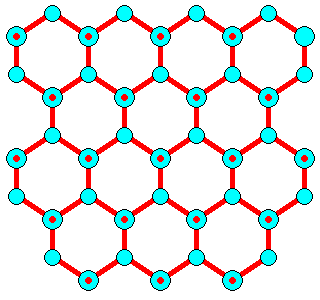Hockey has grown quite popular over the years and as a result there ice rink in places where ice doesn't even exist, how is this done? Well today's technology has a lot to do with it, most rinks are refrigerated even the ones up here in Alaska. Who would want to watch the UAF Nanooks play in 30 below weather? Not I that's for sure, in fact I don't think anybody would want to play in it period. Besides the point there is a lot that goes into making and preparing the ice for Hockey. It can't be any ice, it needs to be well maintained, and it takes a good amount of energy to make an ice rink.
First of all the ice that is present on an ice rink has to be Hexagonal ice, not square, or any other shape. Hexagonal meaning it needs to be made out of water, because when water freezes it forms a Hexagonal shape with its molecules which consist of Hydrogen and Oxygen. This type of formation creates sheets of ice which lead to the Quasi-Fluid water level.


http://www.uwsp.edu/geo/projects/geoweb/participants/Dutch/PETROLGY/Ice%20Structure.HTM http://thunewatch.squarespace.com/storage/zamboni%20cropped.jpg
The Quasi-Fluid water level is very thin and the depth of it varies by temperature. The colder the temperature the thinner the fluid level is, and when the temperature increases the thicker the Quasi level is. This is possible because the top layer doesn't have any molecules on top of it to compress it, therefore making it very easy to come off. So when somebody steps on the ice there foot slips because a thin layer of ice has detached and is rolling underneath their feet.
When forming ice for an ice rink one needs to get the temperature well below 0 degrees Celsius and a considerable amount of time to effectively freeze a large quanity of water. First of all it takes 4.2 joules/gram/Celsius to cool off one gallon of water, and it is doubled when a second gallon is added. When the water hits the 0 degree celsius area, it takes even more energy to freeze the water, which is called the latent heat of fusion, and for water that is 340 Joules/gram.
To maintain the ice one needs to keep it frozen and keep the ice surface nice and smooth for upcoming hockey games. To keep the ice smooth most hockey rinks use a zamboni to get the job done; the zamboni does this by shaving off the top layer of the ice which is usually bits of ice and small piles of snow. At the same time it lays down a layer of warm water which quickly fuses with the ice and replaces the ice that was shaven off.
To keep the ice frozen Hockey rinks have a huge refrigration systems that work like the cooling system in a car. Instead of using straight up water they use salt water which doesn't freeze at 0 degrees Celsius. It is run throught pipes underneath the ice, collects any unwanted thermal energy, travels to a brine,which is similiar to a car raditor, gets cooled off to a freezing temp and sent back underneath the ice.
| Hockey Intro | Reaction time | The Hockey Stick | Home | Bibliography |